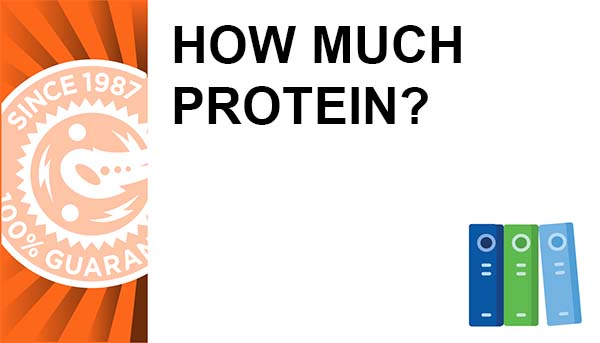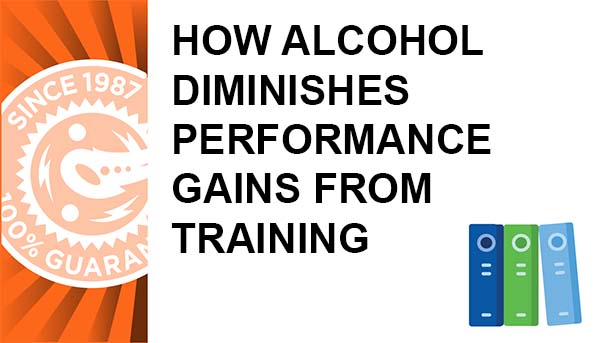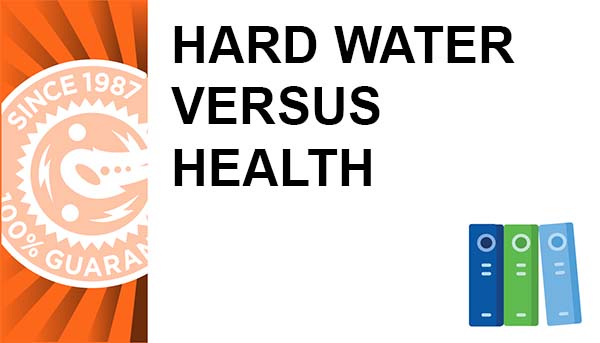By William Misner Ph.D.
Ever wonder how, why, and where the flat stomach, thin thighs, and slim hips of your youth disappeared beneath a blanket of fat? There are a number of metabolic mechanisms known to influence body composition outcome. Lean and fat mass are remarkably dependant upon two hormones. Age-induced decreases of human Growth Hormone[hGH] and Testosterone increase adipose tissue storage rate in both the abdomen and hips. Interventions for stimulating increases in both hormones metabolically may result in significant, yet safe, control over body composition outcome. Taking an exogenous hormone supplement is unsafe, often not predictable, and not recommended, unless monitored by a physician through objective blood lab tests. The purpose of this article is to discuss some of the safe natural means to elevating Testosterone[T] and human Growth Hormone[hGH] during strength or speed interval training phases respectively. Hormone elevation intervention should only be practiced in limited interval time periods due to the potential risk of excess hormone levels having a mutagenic opportunity in some, but not all, predisposed individual athletes.
HOW DIET INFLUENCES TESTOSTERONE
Diet and caloric intake influence the amount of Testosterone produced. Diets higher in protein, cholesterol, saturated fat, and total fat content tend to maintain higher Testosterone levels. One study[1] showed that decreasing fat calories from 40% to 25% while decreasing saturated fat and increasing polyunsaturated fats led to decreases in both total Testosterone[-18%] and free unbound Testosterone levels[-15%]. Upon resuming the original higher fat intake, Testosterone levels returned to original values. Subjects in this study ate -500 fewer calories on the lower fat diet, implicating both fat selection and caloric restriction with decreased Testosterone. From this and other research, though, it's obvious that eating an adequate amount of fat and cholesterol is necessary to maintain Testosterone levels. Eating large amounts of saturated fats and cholesterol is not recommended for maximizing T-levels, but during muscle growth phase, eating a diet of about 30% fat with some saturates and unsaturates, as well as cholesterol will enhance testosterone from a dietary perspective. What about the harm from eating too much of the "Bad" fats? Intense training may be cardio-protective against the negatives from moderate amounts of saturated fat and cholesterol foods. Research suggests that those who consume more protein have higher Testosterone.[2] Those who eat more protein typically consume more animal foods higher in fat and cholesterol.
EXERCISE AND CALORIC ENERGY BALANCE
Negative energy balance[through hypocaloric dieting or extreme exercise expense] is associated with very large decreases in Testosterone. Army Rangers going through summer training in climates like the forest, the desert, the mountains, and the swamp lands were given only 1000 to 2000 calories per day while their bodies had requirements of about 5000. As a result of extreme training and under nutrition, these soldiers had Testosterone levels that "approached castrate levels". SHBG increased +67% and testosterone decreased 350%. SHBG and Testosterone returned to normal within 7 days normal eating patterns.[3] This is also observed in endurance activities such as running. Ever wonder why runners are so lean? In a study done comparing elite distance runners with sedentary men, it was interesting to note that at rest, the sedentary men had 54% more total and free Testosterone in their blood than the runners. It seems that most volume-training athletes have lower levels of T. The volume threshold appears at about 8 hours of exercise per week.
In another study, the runners training at a higher intensity had a larger free Testosterone increase in response to the running, while those training at low intensity produced none:
| RUNNING INTENSITY | DURATION | SEDENTARY RUNNERS | ELITE RUNNERS |
| 80% HR max | 120 minutes | 47% Increase | 76% Increase |
| 80% HR max | 20 minutes | 31% Increase | 62% Increase |
| 50% HR max | 120 minutes | 0 | 0 |
| 50% HR max | 20 minutes | 0 | 0 |
Intense running (80% of max HR) leads to increases in free Testosterone similar to the increases seen with resistance training. Testosterone levels tend to decrease proportionate to intense continuous running or a very high volume of exercise greater than 8 hours per week.[4]
Researchers, who examined the relationship between cycling cadence rate and Growth Hormone level reported that an intense single 30 second sprint produced remarkable hGH increases. The first fast-cadence 30-second sprint produced nearly double the hGH levels of second or subsequent slower cadence efforts:
"Ten male subjects completed two 30-s sprints, separated by 1 hour of passive recovery on two occasions, against an applied resistance equal to 7.5% (fast trial) and 10% (slow trial) of their body mass, respectively. Blood samples were obtained at rest, between the two sprints, and for 1 hour after the second sprint. Peak and mean pedal revolutions were greater in the fast than the slow trial, but there were no differences in peak or mean power output. Blood lactate and blood pH responses did not differ between trials or sprints. The first sprint in each trial elicited an average serum GH response of 40.8 mU/l versus only 20.8 mU/l in the slow cadence effort. Serum hGH was still elevated 60 min after the first sprint. The second sprint in each trial did not elicit a serum hGH response. There was a trend for serum hGH concentrations to be greater in the fast trial (mean GH area under the curve after sprint 1 vs. after sprint 2: 1,697 vs. 933 min ? mU1 ? l1. Repeated sprint cycling results in an attenuation of the hGH response." [5] This would suggest this training method for enhancing hGH levels following a warm-up, favors doing a single 30-second all-out sprint [or a fast lift set]. Hypothetically, such a protocol practiced early in a workout could potentiate exercise-induced hGH release, resulting in a higher rate of lean muscle mass growth and an increased rate of fat mass loss.
HUMAN GROWTH HORMONE[hGH] RELEASE MECHANISMS
The metabolic pathway for human Growth Hormone is complex:
hGH--->IGF-{Liver}--->DHEA{Adrenal}--->TESTOSTERONE + ESTROGEN
hGH is produced by the anterior pituitary gland. IGF-1 is a secondary resulting hGH-induced metabolic hormone produced responsively by the liver. IGF-1 and GH work in feedback order; IGF-1 levels increase in response to hGH. When IGF-1 levels increase to high levels, hGH levels correspondingly decrease. IGF-1 is used as a standard to measure GH levels since it is a reliable metabolic pathway related to hGH physiology. hGH is responsible for the regulation of numerous important biological functions. Research on injectable hGH at high concentrations consistently shows that approximately 60% of the subjects have increases in their IGF-1 levels, 20% would exhibit IGF-1 decreases, and 20% do not change. hGH regulates and balances not only IGF-1, but also every other hormone in the body directly or indirectly. That is why hGH is called the master hormone and the pituitary gland - the master gland. ESTROGEN, PROGESTERONE, MELATONIN, DHEA, and THYROID Hormones each "influence" hGH's hormonal outcome:
1. ESTROGEN slows the loss of minerals from bones, increases blood clotting, decreases oxygen metabolism, and when too high it is known to be a factor in breast and uterine cancer.
2. PROGESTERONE is essential to metabolize glucose, increase bone formation, stimulate regeneration of heart cells, and suppress cancer.
3. MELATONIN from the pineal gland stimulates growth hormone release, reduces free-radical damage effects biological rhythms, and enhances the immune system.
4. DHEA (dehydroepiandrosterone) is a powerful hormone in brain function and the most abundant blood serum hormone. DHEA is the precursor to hormones that regulate metabolic functions. DHEA declines with age. Low DHEA is linked to diabetes, obesity, high cholesterol, heart disease, arthritis, and age-related degenerative symptoms.
5. THYROID HORMONES regulate metabolism. Low levels of Thyroid may result in chronic fatigue, weight gain, low body temperatures, or depression may occur. Thyroid hormones can also be extremely useful in overcoming decreased metabolism associated with long-term obesity. However, due potential negative side effects, this hormone should only be prescribed and monitored by a physician.
The signs of hGH deficiency are reduced lean body mass and mineral bone density, increased body fat, decreased HDL, increased LDL, reduced renal plasma flow, reduced muscle bulk, decreased exercise performance, reduced extra cellular fluids, increased waist to hip ratio, reduced basil metabolic rate, decreased muscle strength, reduced Anaerobic threshold. As we age, human Growth Hormone levels tend to decrease as noted by the normal reference ranges of SOMATOMEDIN-C or IGF-1, which is used to measure hGH, a pivoting hormonal mechanism in youth:[6]
AVERAGE PLASMA INSULIN-LIKE GROWTH FACTOR-1[SOMATOMEDIN-C LEVELS]
| GENDER | AGE | LOW | HIGH | UNITS |
| FEMALES | 12-15 YRS | 261 | 1096 | NG/ML |
| FEMALES | 16-24 YRS | 182 | 780 | NG/ML |
| FEMALES | 25-39 YRS | 114 | 492 | NG/ML |
| FEMALES | 40-54 YRS | 90 | 360 | NG/ML |
| FEMALES | 55 YRS | 71 | 290 | NG/ML |
| MALES | 12-15 YRS | 202 | 957 | NG/ML |
| MALES | 16-24 YRS | 182 | 780 | NG/ML |
| MALES | 25-39 YRS | 114 | 492 | NG/ML |
| MALES | 40-54 YRS | 90 | 360 | NG/ML |
| MALES | 55 YRS | 71 | 290 | NG/ML |
Aside from the time-induced growth hormone decreases, of which we have no control, what other factors within our control inhibit or enhance human Growth Hormone levels?
| INHIBITORS OF hGH | ENHANCERS OF hGH |
| Somatistatin | Reduce BMI by 1.5 = 100% hGH boost |
| Sugar, Carbohydrates, Insulin | Protein, Glucagon |
| Fatty Acids | Fasting, Niacin B-3 |
| sleep loss | Deep REM Sleep |
| Inactivity | Activity[Sprinting, Resistance, Endurance Training] |
| NSAIDS | ph-Changes |
| Caffeine | Vibration Stimulus |
| Alcohol | AMINO ACIDS PRECURSORS* |
| Depression | Elation |
| Cold Weather | Hot Weather |
| Virus/Bacteria | Peak Health/Minimal Viral Or Bacterial Counts |
*PRECURSORS are the foundation "raw materials" from which the body produces its own GH. Some precursors are the amino acids glycine, tryptophan, arginine, ornithine, lysine and glutamine.
HOW DIET INFLUENCES hGH LEVELS
Approximately 85% of the Human Growth Hormone released occurs at night during deep sleep state. Increasing pituitary-released hGH may be the ideal means to improve hGH levels for maximizing lean muscle mass synthesis while increasing the rate of fat metabolism.
APPROXIMATE hGH LEVELS RELEASED [m/UL]
-->From 8:00 AM to 9:00 PM......15 m/UL=[awake] 16% in 11 hours
-->From 10:00 PM to 8:00 AM......78 m/UL=[DEEP REM Sleep!] 84% in 10 hours
GROWTH HORMONE PRECAUTION: A LITTLE IS GOOD, BUT TOO MUCH IS...
One study in chickens overinjected with too much hGH resulted in catabolism with a distal implication of increased mutagenic activity. One study shows a pathway by which GH impacts on thyroid hormone metabolism beginning at a pretranslational level, with reduced hepatic 5DIII gene expression, translating to reduced protein (enzyme) expression, and reflect a reduced level of peripheral T3-degrading activity, which contributed a decreased conversion of T3 to its inactive form, thereby elevating circulating T3 levels. The hyper-T3 state leads to reduced net skeletal muscle deposition, and may impair release of hGH-enhanced, hepatic IGF-1. hGH may have significant biological effects in the chicken in which profound metabolic actions predominate that may confound positive, IGF-1-mediated skeletal muscle growth.[7] Since this application has not been determined safe for humans, it is suggested that we keep hormone levels balanced until more evidence is conclusively collected.
PRACTICAL APPLICATIONS
When an athlete enters an intense strength or interval training phase for 1-3 days per week, the following interventions may increase the levels of testosterone and growth hormones contributing to significant lean muscle mass gains and fat mass loss:
GUIDELINES FOR INCREASING NIGHTTIME RELEASE OF hGH:
1-AVOID eating high carbohydrates, high Fat meal at dinner, after 7:00 PM or as a night time snack, resulting in GH-INHIBITION in the evening + morning.
2-Insulin too high (caused by eating too many carbohydrates).
3-Fatty Acids too high (caused by eating too much Fat).
4-Excess body fat may be increased by eating too many carbohydrates and Fats in late day.
5-Ingest amino acid precursors on an empty stomach 60-120 minutes PRIOR to an intensity workout. Either ARGININE PYROGLUTAMATE LYSINE[APGL] 2400 mg increases hGH release 700% [8] or GLUTAMINE 2000 mg increases hGH release by 430% above sedentary values.[9]
6-MELATONIN dose of 3-10 mg may be taken 60-120 minutes prior to sleep in athletes over age 40, resulting in improved deep-stage REM sleep and enhancing both hGH quality and quantity. If a sleep cycle is already adequate, there is no need to take melatonin.
7-AVOID ALCOHOL during strength-speed phase training; alcohol neutralizes hormonal influence during muscle synthesis.
8-Speed interval training increases hGH hormone release from 1000-1500% above sedentary levels.
GUIDELINES FOR INCREASING DAYTIME RELEASE OF TESTOSTERONE
1-Consume 1.7 to 2.0 grams per kilograms of bodyweight protein.
2-Include Whey Protein Concentrates immediately post-workout with a 2-4 gram dose of essential fatty acids ratio 2/3 parts omega 6 to 1 part omega
3. 3-Evening meals should include lean red meats up to 3 times per week.
4-Minimize endurance training duration during strength phase efforts.
5-Caloric intake should be adequate to above normal levels; strength gains occur only when caloric intake is sufficient but are inhibited during a caloric deficit.
6-Avoid alcohol during strength-speed phase training; alcohol neutralizes hormonal influence during muscle synthesis.
7-Strength resistance low reps exercise may result in higher Testosterone release than high reps sets. By practicing interventions to increase natural testosterone and hGH hormone levels during intensity or speed-strength sessions, a profound increased rate of muscle synthesis and fat mass metabolism may be evidenced in improved athletic performance, like when the subject was hormonally in their youth...
REFERENCES
[1]-J Steroid Biochem 20 (1): 459-464, 1984.
[2]-J Clin Endocrinol Met 85 (1): 293-296, 2000.
[3]-J Appl Physiol 88: 1820-1830, 2000.
[4]-Eur J Appl Physiol 73 (5): 427-433, 1996.
[5]-J Appl Physiol 2002;92 602-608.
[6]-UCSD Medical Center Laboratory Reference SOMATOMEDIN-C @: http://health.ucsd.edu/labref/P622.html
[7]-New insights into the mechanism and actions of growth hormone (GH) in poultry. Proceedings of the 3rd International Conference on Farm Animal Endocrinology. The Illinois Acadamy Of Sciences School of Medicine DATABASES ENDOCRINOLOGY DATABASES @: http://museum.state.il.us/isas/igf01.html
[8]-Current Medical Research & Opinion 7:7:1991:475-481. [9]-Am J Clin Nutr 1995;61:1058-1061. *Bill Misner Ph.D. is the Director of Research & Product Development for HAMMER NUTRITION LTD. 1-800-336-1977









